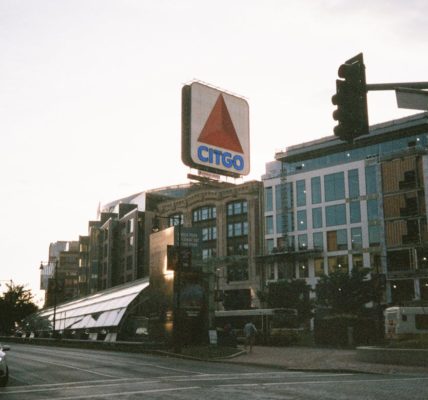David Cone was a pretty good pitcher in his day. In fact, he may have become one of the most underrated pitchers of his era. The Kansas City native Cone was drafted by the Kansas City Royals in the 3rd round of the 1981 Amateur Draft. Unfortunately, he wouldn’t get to enjoy the 1985 World Championship, as his Royals debut didn’t come until June 8th 1986 out of the bullpen. It wasn’t a great appearance, giving up 3 hits and one earned run in an inning of work. He didn’t impress the Royals brass at all in his 11 appearances, and gave up 29 hits and 13 walks in just 22 and two-third innings.
However, the Royals would end up making a regrettable decision. They’d trade Cone along with reserve outfield Chris Jelic for relievers Rick Anderson and Mauro Gozzo, plus catcher Ed Hearn. It would turn out to be a dreadful trade, although Rick Anderson would later enjoy a career as a pitching coach for the Minnesota Twins. Meanwhile, Cone would go on to become one of the best pitchers in the National League.
Cone’s seven years in Flushing, New York would be some of the very best of his career. In 1992, in his contract year, Cone was traded to the Blue Jays for Jeff Kent. While Kent would inevitably turn into a good player in the MLB, it didn’t happen for the Mets. Meanwhile, Cone would go on to win the first of his five World Series Championships across the northern border.
After the 1992 season, he became a free agent and signed back with his hometown Kansas City Royals. This is probably the most forgettable stop in his long career, despite having two of his best pitching seasons in 1993 and 1994. In fact, Cone was the Cy Young award winner in the strike shortened 1994 season. In yet another contract year, Cone was traded in April of 1995, yet again to the Blue Jays, This time, the deal was for a couple minor leaguers and Chris Stynes (who had a few good years in the Majors).
The 1995 Blue Jays would end up going nowhere, though, and an excellent Cone became their best trade chip. In July of 1995, he was traded to the New York Yankees by the Blue Jays. The Yankees got a steal as none of the three players they gave up became anything. Cone pitched well for the Yankees, collecting 2.6 WAR and pitching well in the Division Series that the Yankees ultimately lost to the Mariners. Cone did become a free agent after the season, but he elected to rejoin the Yankees in 1996 on a three-year deal worth $19.5 million.
In 1996, Cone had a major health scare. After several amazing starts, it was discovered he had an aneurysm in his right arm. He’d miss most of the year, but returned strong in September and October, pitching well throughout the playoffs. He pitched for the Yankees from through 2000, re-upping on a big one-year deal in 1998, and a two-year deal in 1999. Cone blew up in 2000 while being paid $12 million that season, pitching to the tune of a 6.91 ERA with an inflated walk rate (4.8 BB/9 vs career 3.5 BB/9). The Yankees let him go after the season and he looked done.
However, knowing Cone well playing against him in his time with both the Jays and Yankees, the Boston Red Sox decided to give him a $1 million contract for 2001. While he wasn’t phenomenal and only pitched 135 innings over 25 starts, he was worth 1.9 WAR to the Red Sox. That made him about a league-average starting pitcher, an absolute bargain at that salary. The Mets would give him another shot in 2002 but he was knocked around in 5 games (4 starts) before retiring.
Overall, Cone won 194 games over 17 seasons with a 3.46 ERA. He struck out a solid 8.3 batters per 9 innings and was respectable with his walk rate around 3.5 BB/9. He earned a lot of money in his career and deserved it, being one of the better pitchers both in the American League and National League when he was in those leagues. It’s interesting to see that he was traded three times in two of his contract years. Inevitably, he’d be remembered most for his time with the Yankees, who helped him gain four World Championship rings in 1996, 1998, 1999, and 2000).
Cone may not have become a Hall-of-Famer, yet he racked up 62.3 Baseball-Reference WAR in his career. That’s actually more than a few Hall-of-Fame pitchers, like Early Wynn (61.1 WAR) and Jim Bunning (59.4). He’s in the neighborhood of It wouldn’t shock me if Cone made it to Cooperstown one day by vote of the Eras Committee. While he’s mostly remembered today as a Yankee, and understandably so, he was a great pitcher no matter where he went. Cone deserves far more attention historically than he gets.
It’s interesting that Cone is still overlooked as potential Hall of Fame material because he’s very much still in baseball. In fact, for the 2022 season, Cone was hired by ESPN to be part of the Sunday Night Baseball broadcast booth, while still working with Michael Kay and the YES Network. He’s been with YES since 2011, although he had stints with them before that.
Cone is a huge proponent of sabermetrics and has mentioned sabermetric staple website FanGraphs on air. Yet, he was never considered for the Hall of Fame, despite the advanced metrics saying he belongs. He should definitely get another chance, especially as he is a part of the very media that would get him in there. In any case, baseball fans will continue to enjoy his immense knowledge about the game of baseball for years to come.








RECENT COMMENTS